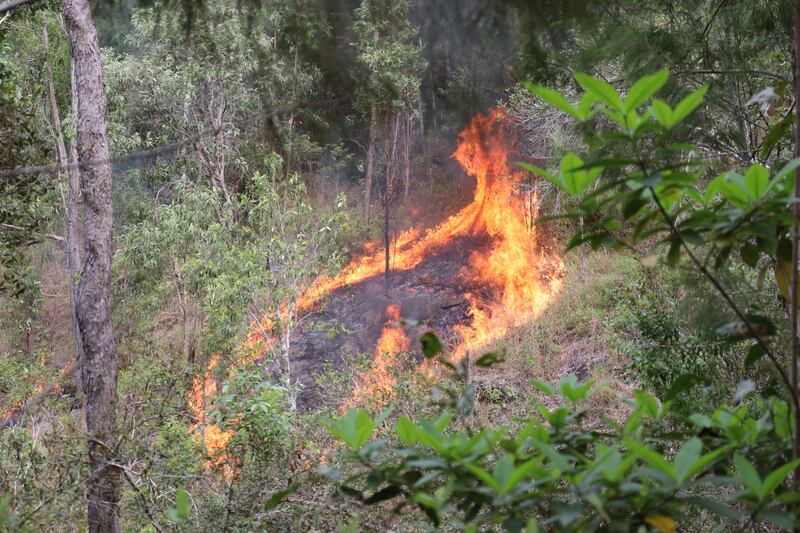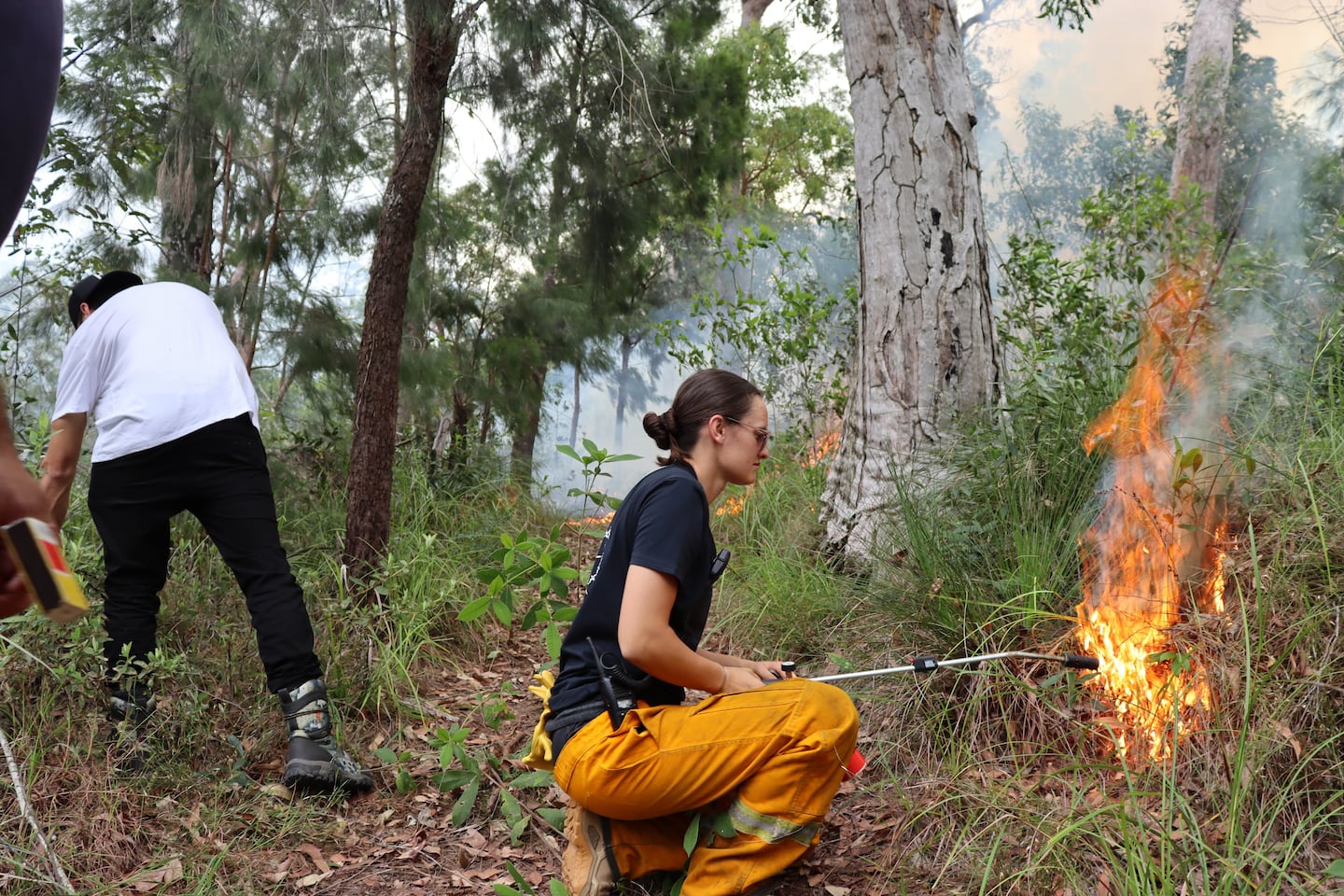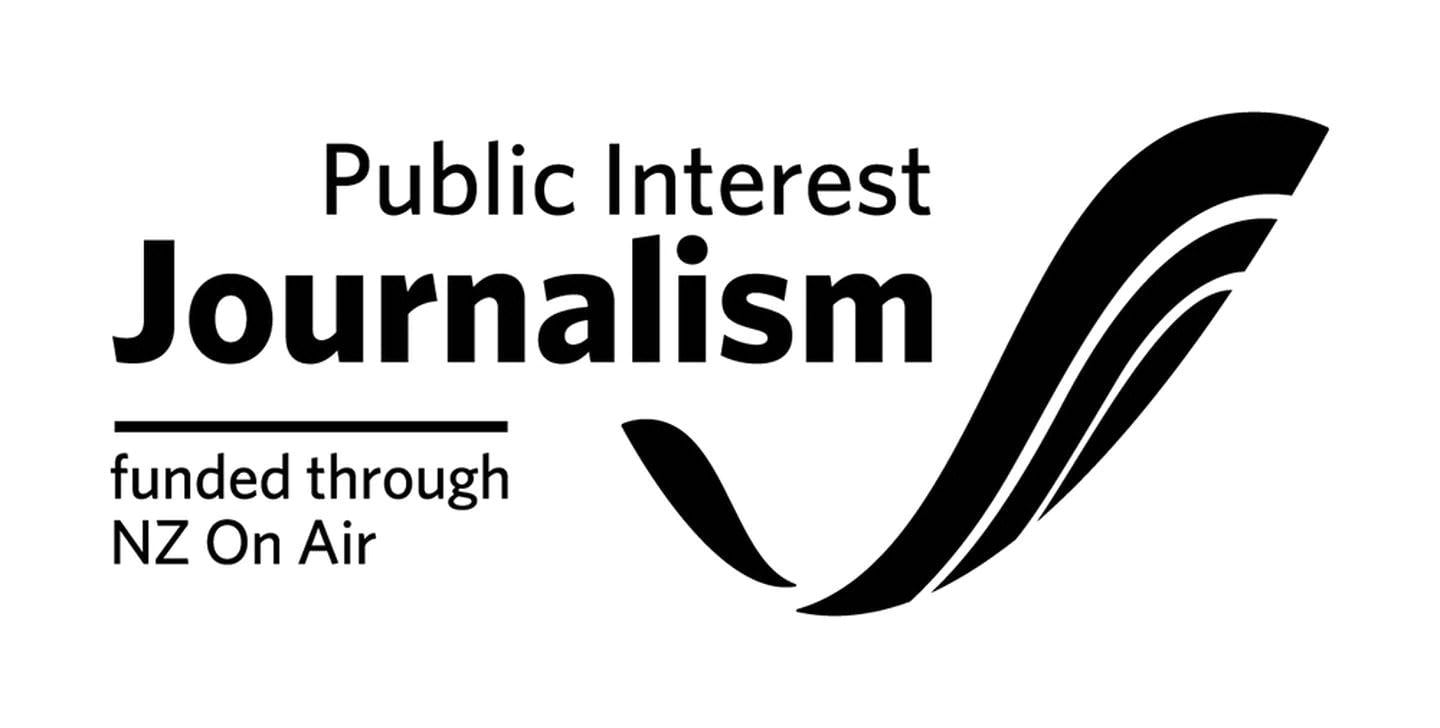A northern iwi has invited Aboriginal fire experts to teach locals traditional fire burnoff methods next month..
Ngāti Kuri Trust Board member Sheridan Waitai (Ngāti Kuri, Te Rarawa, Tainui) has been championing Indigenous knowledge of te ao Māori fire burning practices in Northland for some time.
The trust board organised an International gathering in 2018 to discuss indigenous practices, and it has since built strong bonds between Māori and first nations Australians.
“We had the full burn team from Australia come up to Kapowairua and at that stage they were a full female burn team of Aboriginal traditional owners.”
She says the foundations for this cultural gathering goes back to 2016 when she started attending a few conferences and exchanging knowledge with dreamtime relations and other Indigenous groups.
Waitai says that got them thinking about what their own traditional practices were “in terms of our forest health and what some of the strategies our tupuna would apply just to mitigate risk and stuff like that.”

Indigenous knowledge
Waitai says the first step was acknowledging that as traditional owners or as indigenous people they had the solutions and they needed to apply them.
She says they started to dabble in that, looking first at all the different uses for raupō (bulrush or Typha Orientalis), which also burns fiercely when used in firebreaks.Raupō is also native to Australia.
“Then over time we decided, yeah this is it, being true to honouring our own mātauranga.”
Waitai says many of these traditional fire burning practices have come through different forms of Indigenous knowledge through the te ao Māori world.
“Through our pūrākau (storytelling) around Mahuika (Māori fire deity) and kaikomako (food for the bellbird,) we have the hononga (bond) or the absolute connection to the gift of fire. We have all these different types of fire, fire that came on waka, fire that’s for cooking, fires that’s for kokowai, fire for storytelling and then there’s the fire for clearing gardens.”
Thirty years of success
She says there are different types of fire,including fire for creating natural burn breaks. “In our living memory, our grandfathers burnt but they burnt a lot for clearing because the land was being redeveloped.”
Waitai says she also spent some time in Tuwharetoa and heard some iwi members’ stories about their pūrākau and traditional fire practices and that they do exist across te ao Māori, and across the Pacific.
“The Girringun rangers are up around Cardwell, so about two hours north of Townsville.
They have one million square kilometres of land they collectively manage and there are nine tribes that have formed this incorporation.”
She says Girrigun rangers have been doing this for well over 30 years now. They were the first to establish themselves as an Indigenous collaboration of Indigenous owners.
Waitai says the reason Ngāti Kuri developed the relationship with the Girringun rangers was because of the similarity of plants and soils in northern Northland to Australian ones, many genetically close.
“Anywhere south of Waitiki is mostly like everywhere else in Aotearoa but north of that has a different whakapapa, both from our creation stories but also from a science speak as well.”
“It was about us as tangata formalising and reigniting those connections.”
‘Super exciting, super scary’
Waitai says it was a real privilege to finally get to be received by the Girrigun rangers and to be taken around what they call water country, outback country. “There’s so many different types of country they have and have experienced 60,000 years of unbroken traditional fire practice.
“It was a privilege going to cultural sites that have been preserved for thousands of years due to their traditional practice.
“Getting boots on the ground straight into their bush, straight out onto their water was really cool, super exciting, super scary.”
She says, “again our living memory has been wildfire, so we’ve been absolutely petrified of fire and to be walking alongside them when the burn is on and they are flicking their matches. and they’ve got these big bombs that they’re letting go through these slingshots.”
Waitai admires ‘the confidence they had, their own knowledge, how it had been passed down and walked it, talked, shared it. It was just such an awesome experience.’
“And what that did for our people, hau kāinga was have them say ‘hey yeah we do have this within our capability to do’. It was really empowering for our own.”
Checking out similarities
She says the First Nations Australians land on March 10 and they’ll be here in Aotearoa for about nine to 10 days.
“We’re literally going into the bush to share what it looks like so, similarities, differences, humidity, soil type and really drawing on some of their knowledge of the environment, wind.
She says they will research “right down to the level of humidity where your burns are.”
“They are bringing a range of processes from the beginning to the end of establishing a burn. What authorities need to be included and what are some of the processes, the health and safety and stuff like that?”
Waitai says they’ve also reached out to their local fire brigade boss because it’s really important that they include the authorities to be part of the journey and that it is actually do-able.
“If First Nations Australians can have a government that supports this stuff, then what’s stopping ours, really?”




